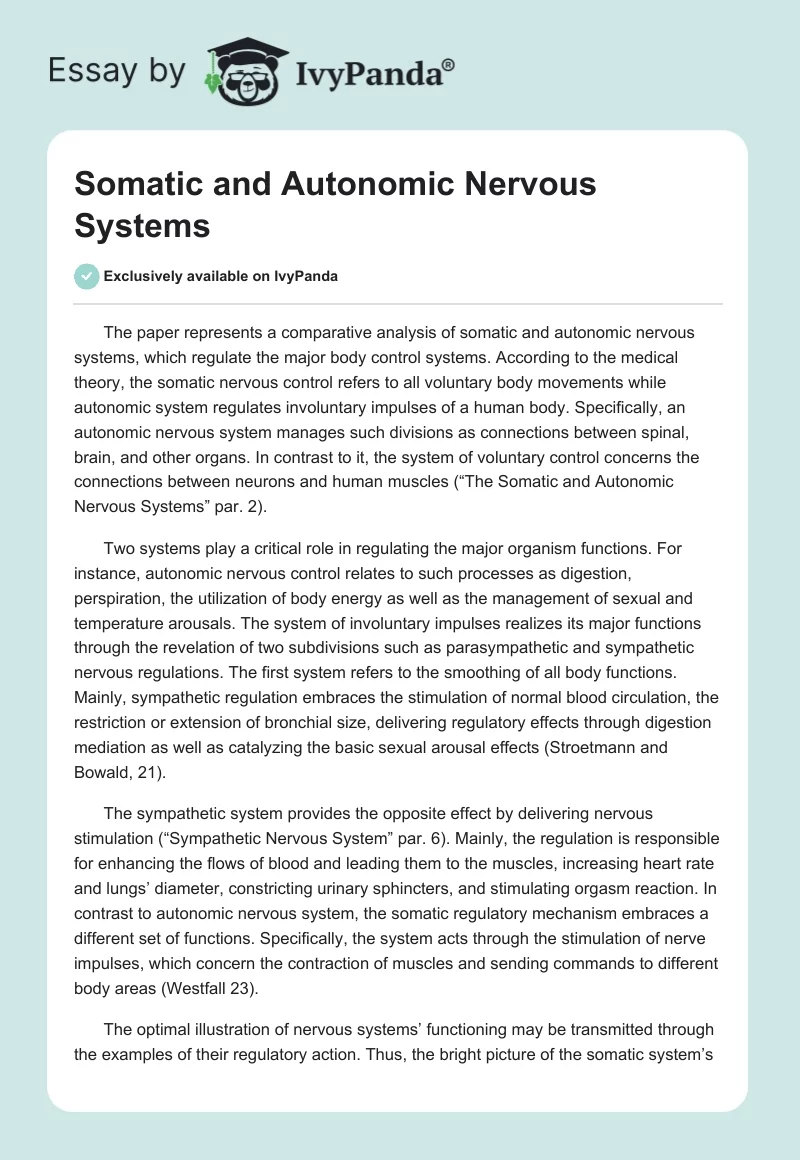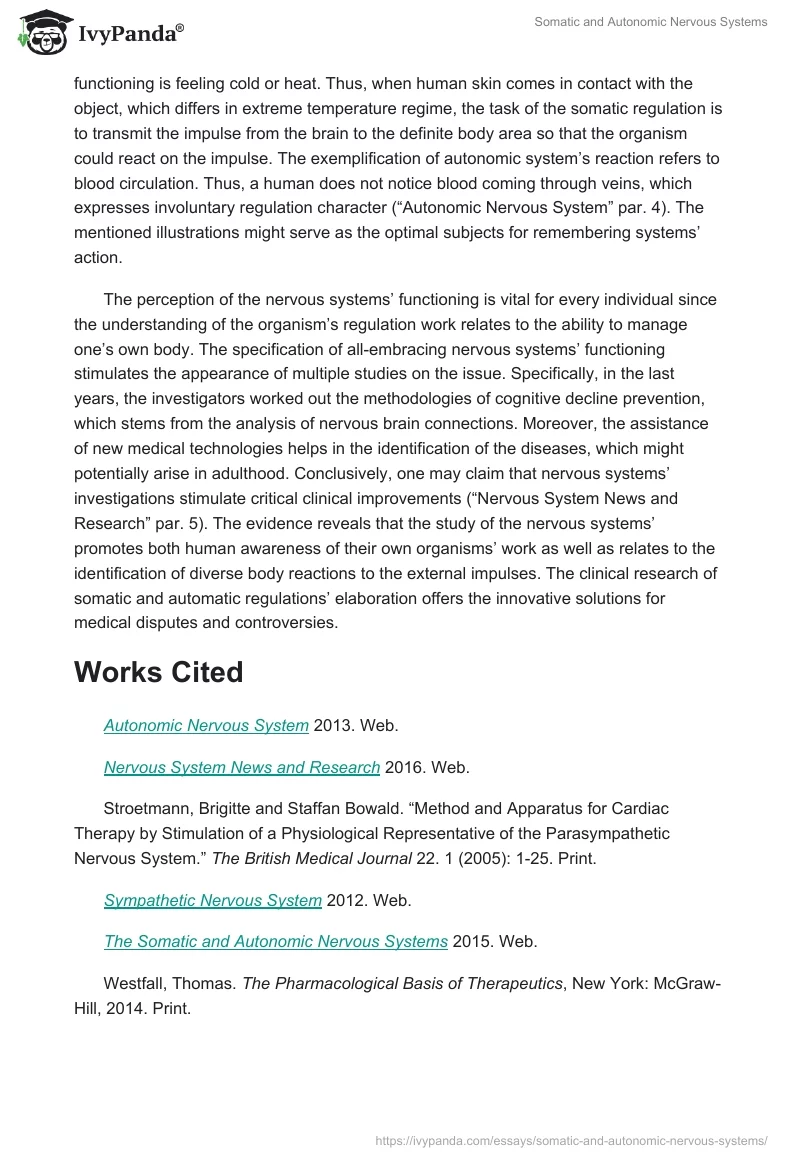The paper represents a comparative analysis of somatic and autonomic nervous systems, which regulate the major body control systems. According to the medical theory, the somatic nervous control refers to all voluntary body movements while autonomic system regulates involuntary impulses of a human body. Specifically, an autonomic nervous system manages such divisions as connections between spinal, brain, and other organs. In contrast to it, the system of voluntary control concerns the connections between neurons and human muscles (“The Somatic and Autonomic Nervous Systems” par. 2).
Two systems play a critical role in regulating the major organism functions. For instance, autonomic nervous control relates to such processes as digestion, perspiration, the utilization of body energy as well as the management of sexual and temperature arousals. The system of involuntary impulses realizes its major functions through the revelation of two subdivisions such as parasympathetic and sympathetic nervous regulations. The first system refers to the smoothing of all body functions. Mainly, sympathetic regulation embraces the stimulation of normal blood circulation, the restriction or extension of bronchial size, delivering regulatory effects through digestion mediation as well as catalyzing the basic sexual arousal effects (Stroetmann and Bowald, 21).
The sympathetic system provides the opposite effect by delivering nervous stimulation (“Sympathetic Nervous System” par. 6). Mainly, the regulation is responsible for enhancing the flows of blood and leading them to the muscles, increasing heart rate and lungs’ diameter, constricting urinary sphincters, and stimulating orgasm reaction. In contrast to autonomic nervous system, the somatic regulatory mechanism embraces a different set of functions. Specifically, the system acts through the stimulation of nerve impulses, which concern the contraction of muscles and sending commands to different body areas (Westfall 23).
The optimal illustration of nervous systems’ functioning may be transmitted through the examples of their regulatory action. Thus, the bright picture of the somatic system’s functioning is feeling cold or heat. Thus, when human skin comes in contact with the object, which differs in extreme temperature regime, the task of the somatic regulation is to transmit the impulse from the brain to the definite body area so that the organism could react on the impulse. The exemplification of autonomic system’s reaction refers to blood circulation. Thus, a human does not notice blood coming through veins, which expresses involuntary regulation character (“Autonomic Nervous System” par. 4). The mentioned illustrations might serve as the optimal subjects for remembering systems’ action.
The perception of the nervous systems’ functioning is vital for every individual since the understanding of the organism’s regulation work relates to the ability to manage one’s own body. The specification of all-embracing nervous systems’ functioning stimulates the appearance of multiple studies on the issue. Specifically, in the last years, the investigators worked out the methodologies of cognitive decline prevention, which stems from the analysis of nervous brain connections. Moreover, the assistance of new medical technologies helps in the identification of the diseases, which might potentially arise in adulthood. Conclusively, one may claim that nervous systems’ investigations stimulate critical clinical improvements (“Nervous System News and Research” par. 5). The evidence reveals that the study of the nervous systems’ promotes both human awareness of their own organisms’ work as well as relates to the identification of diverse body reactions to the external impulses. The clinical research of somatic and automatic regulations’ elaboration offers the innovative solutions for medical disputes and controversies.
Works Cited
Autonomic Nervous System. 2013. Web.
Nervous System News and Research. 2016. Web.
Stroetmann, Brigitte and Staffan Bowald. “Method and Apparatus for Cardiac Therapy by Stimulation of a Physiological Representative of the Parasympathetic Nervous System.” The British Medical Journal 22. 1 (2005): 1-25. Print.
Sympathetic Nervous System. 2012. Web.
The Somatic and Autonomic Nervous Systems. 2015. Web.
Westfall, Thomas. The Pharmacological Basis of Therapeutics, New York: McGraw-Hill, 2014. Print.


